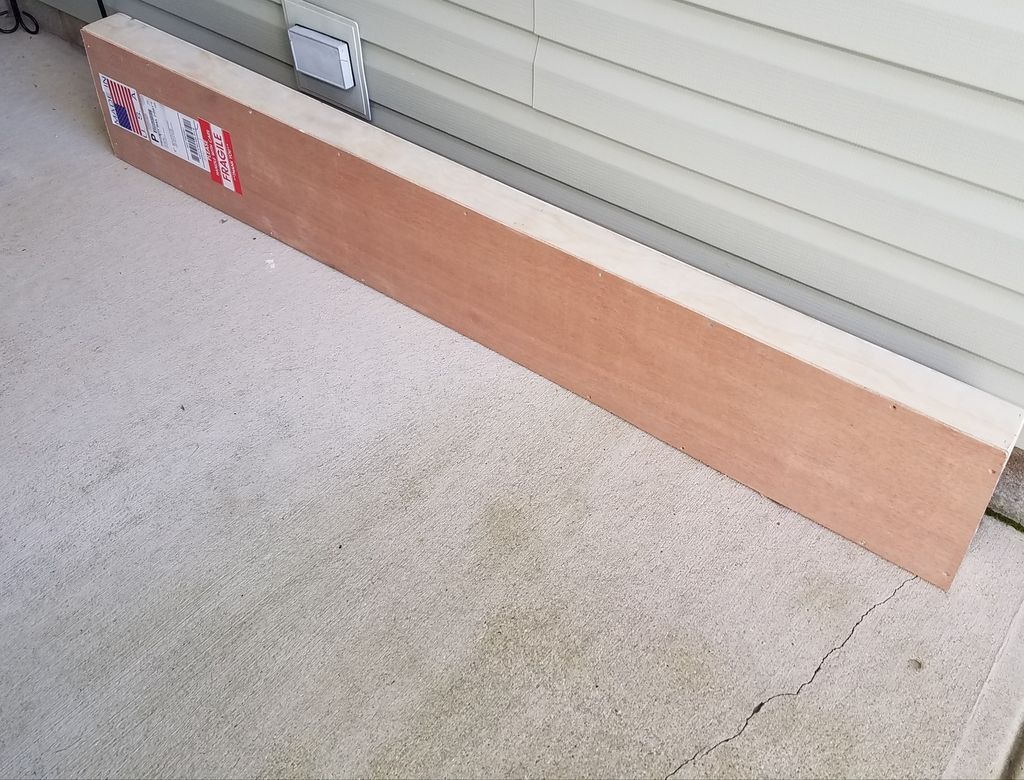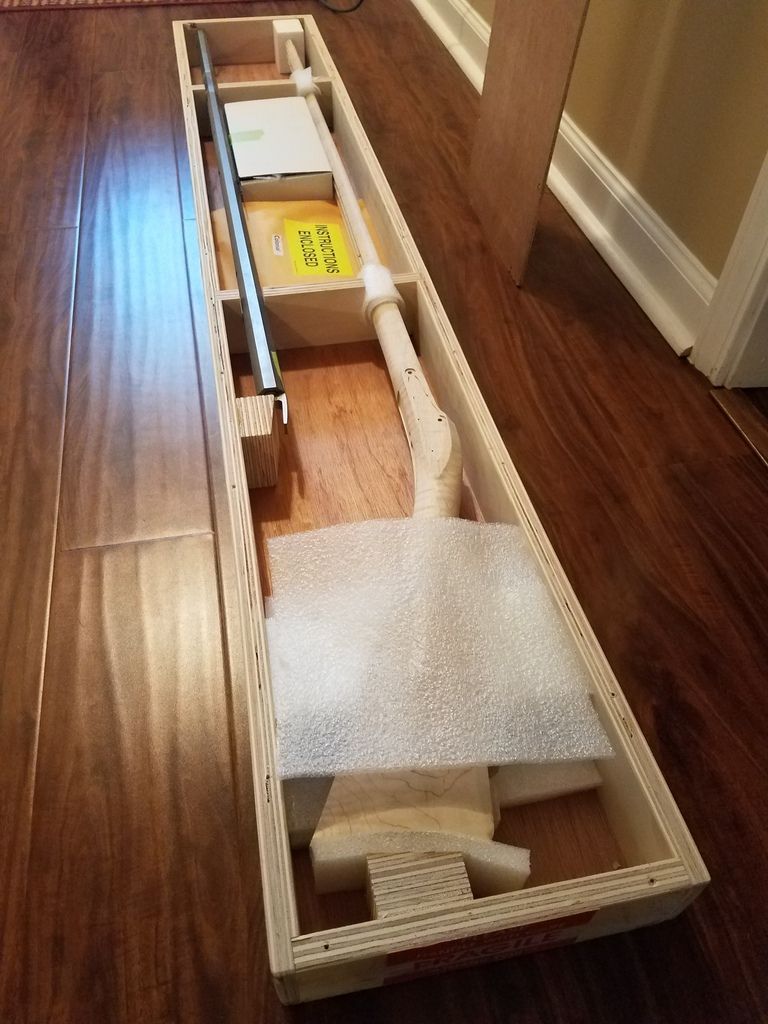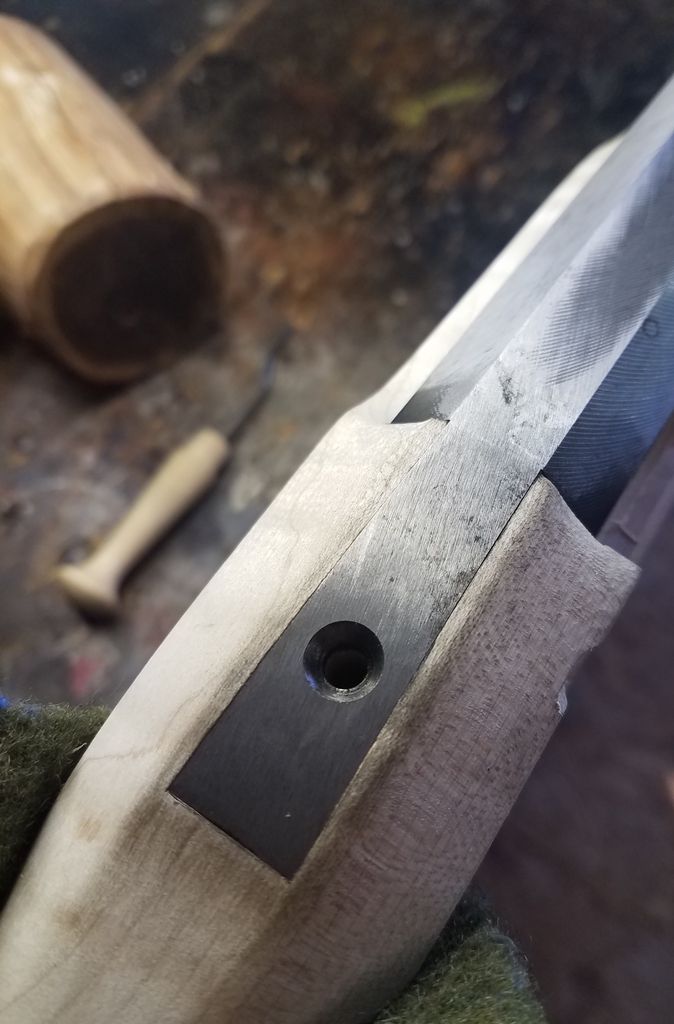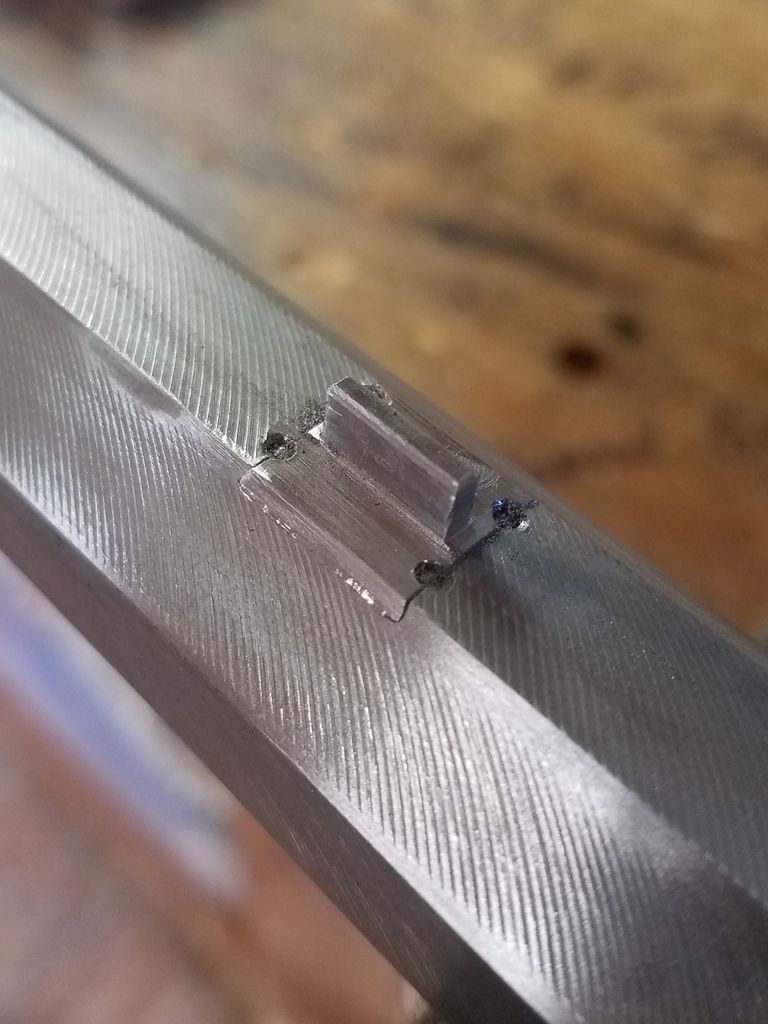There has been much conversation on Jim Kiblers rifles, and for good reason. While much discussion has been had, I have not seen a post highlighting what is involved to complete one of these true "kit rifles" for others on the fence of purchasing one of these kits. To start, if one has zero experience building a longrifle, stop and seek a good reference and read about the subject. There are many excellent references for beginners and I always have a copy of recreating the American Longrifle on my bench for reference purposes. Again, if you are new to building don't be scared of these kits, however I will say you absolutely will want to take your time as these are high quality kits that demand patience to be completed correctly, use your reference material!
To start, Jim does a WONDERFUL job of securing the contents of the kit for shipping. Images will speak for themselves!


I started my .54 Smoothbore Colonial today, had a few hours to spare and hastily made way to the shop. I had requested extra fine and fancy maple at his extra charge. Very happy with the extra money spent.


First step, barrel and tang were correctly set. Inlets were extremely tight, I did have to work awhile to properly seat the breech and tang. However, absolutely nothing compared to other "bag of parts rifles". Right away the CNC process used on these stocks is first rate and already worth the costs associated with the kit.




One thing to note, every corner were the cutter made a 90 degree corner you will find a slight radius from the bit that needs removing. Very easy to remove with a sharp chisel and one will continue to roll on.

Next step was the installation of the barrel loops or tenons. This process was more tedious than I anticipated. Honestly would have preferred to cut the dovetails myself, reason being the doves are very shallow, I found my standard safe sided triangle file a tad to large for the pre cut slots. No fault of the kit, grabbed a smaller file and taped off a safe side, then proceeded to roll on with all four without issue. Lastly one doesn't need to stake the loops but I prefer to with a center punch for extra security. File flush with the barrel flats and your done. I'll cut relief slots in the tenons once they are drilled as well.

Last item on todays list was installing the trigger plate and tang screw. Tang screw hole is already drilled and tapped on the plate, as are 95% of the holes on the kit. Minus removing the radius on all four corners and filling a slight draft on the plate, no fitting required. A small wood screw is installed to hold the back of the plate, my first modification was to install a slightly larger screw than the one supplied. The plate is thick so I personally felt I'd sleep better with a larger screw. Countered the new hole and again... Rolled on!

Unfortunately I am awaiting my buttplate and patch box spring, therefore I'll be doing things out of order until those two items arrive.
Overall I'm extremely pleased with this kit, once completed I have a slight feeling she'll be a dandy rifle! Much more to come!
To start, Jim does a WONDERFUL job of securing the contents of the kit for shipping. Images will speak for themselves!


I started my .54 Smoothbore Colonial today, had a few hours to spare and hastily made way to the shop. I had requested extra fine and fancy maple at his extra charge. Very happy with the extra money spent.


First step, barrel and tang were correctly set. Inlets were extremely tight, I did have to work awhile to properly seat the breech and tang. However, absolutely nothing compared to other "bag of parts rifles". Right away the CNC process used on these stocks is first rate and already worth the costs associated with the kit.




One thing to note, every corner were the cutter made a 90 degree corner you will find a slight radius from the bit that needs removing. Very easy to remove with a sharp chisel and one will continue to roll on.

Next step was the installation of the barrel loops or tenons. This process was more tedious than I anticipated. Honestly would have preferred to cut the dovetails myself, reason being the doves are very shallow, I found my standard safe sided triangle file a tad to large for the pre cut slots. No fault of the kit, grabbed a smaller file and taped off a safe side, then proceeded to roll on with all four without issue. Lastly one doesn't need to stake the loops but I prefer to with a center punch for extra security. File flush with the barrel flats and your done. I'll cut relief slots in the tenons once they are drilled as well.

Last item on todays list was installing the trigger plate and tang screw. Tang screw hole is already drilled and tapped on the plate, as are 95% of the holes on the kit. Minus removing the radius on all four corners and filling a slight draft on the plate, no fitting required. A small wood screw is installed to hold the back of the plate, my first modification was to install a slightly larger screw than the one supplied. The plate is thick so I personally felt I'd sleep better with a larger screw. Countered the new hole and again... Rolled on!

Unfortunately I am awaiting my buttplate and patch box spring, therefore I'll be doing things out of order until those two items arrive.
Overall I'm extremely pleased with this kit, once completed I have a slight feeling she'll be a dandy rifle! Much more to come!




